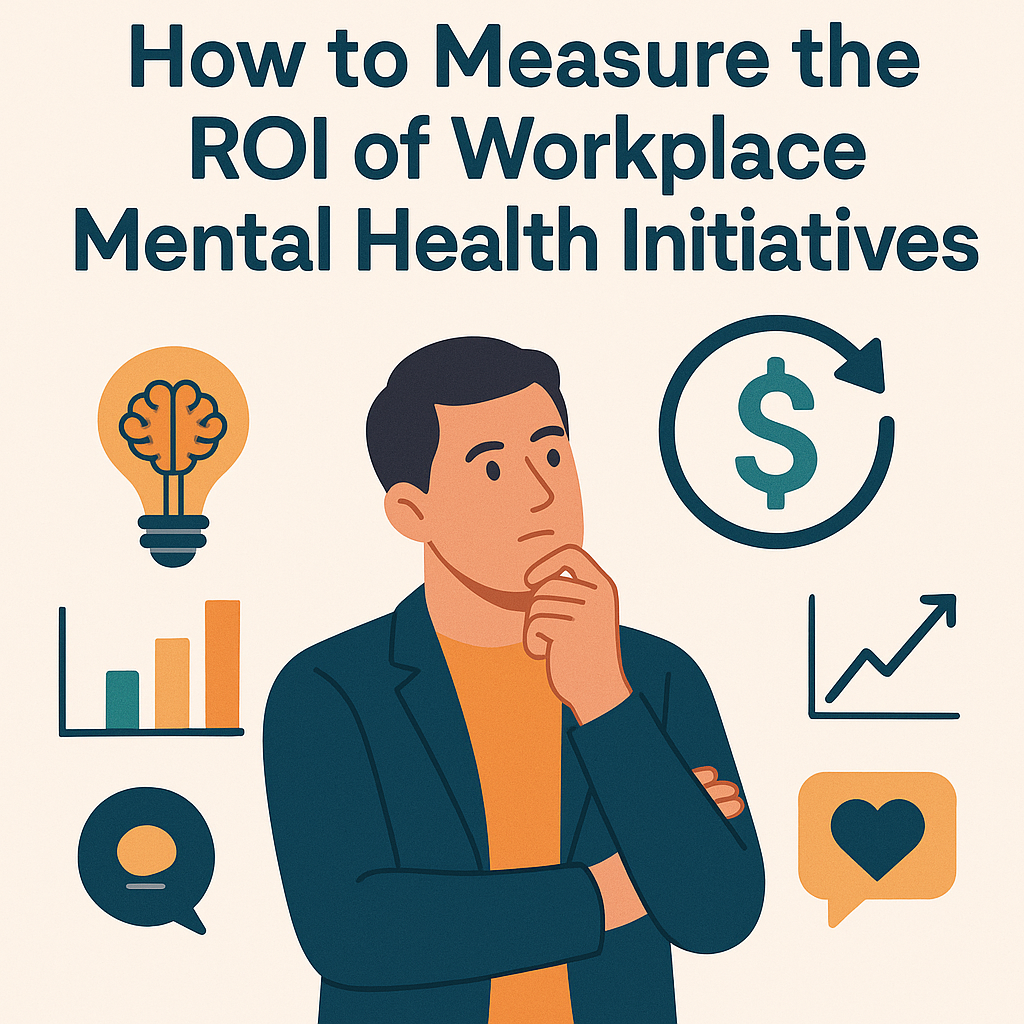But one key area that often gets overlooked is employee mental health.
It may seem like a personal issue, but poor mental health at work affects productivity, increases absenteeism, and drives up turnover, costing your company more than you might realize.
On the other hand, when employees feel supported mentally and emotionally, they’re more focused, engaged, and loyal.
You might be asking, “How can I be sure that investing in mental health programs will pay off?”
That’s where this article comes in, to break down how to measure the value of mental health initiatives in simple steps.
You’ll learn what to track and how to see measurable results. By the end, you’ll have a clear action plan to start making better decisions for your people and your business.
Understanding What ROI Means in Mental Health Programs

As you welcome mental health initiatives, ROI (Return On Investment) helps you assess whether the money and resources spent on these programs are bringing back value to your company. This isn’t just about direct profits; it includes:
- Improved productivity
- Better team morale
- Fewer sick days
- Lower turnover rates
Many companies overlook this aspect because the benefits of mental health are not always immediately visible.
But over time, the numbers become clear. Mental health initiatives can include:
- Counseling sessions
- Mental health days
- Stress management training
- Access to a therapist
The World Health Organization reports that for every $1 invested in mental health treatment, there is a $4 return in improved health and productivity.
By understanding ROI in this context, you shift your view of mental health from a cost to a strategic investment. It becomes a tool not only for employee wellness but for business growth.
In the next sections, we’ll break down how to calculate this investment step-by-step.
Before you can calculate ROI, you need to understand what you’re investing.
Costs can vary depending on the size of your team, the services you offer, and the duration of the programs. Here are the main cost areas to consider:
- Program Development Costs: This includes planning and designing workshops, hiring experts, and customizing content.
- Training and Workshop Costs: Expenses for facilitators, training materials, and employee time spent attending sessions.
- Ongoing Support Services: Such as subscriptions to mental health platforms, on-call therapists, or employee assistance programs (EAPs).
- Administrative and Promotion Costs: Staff time used to coordinate and promote mental health programs, plus materials like flyers, emails, and digital reminders.
- Indirect Costs: Time off for participation, shifts in work routines, or productivity lags during initial rollouts.
At the same time, a larger company could afford a full-time onsite counselor and weekly group sessions.
Transparency in cost tracking helps you align your goals with your financial plan. It also prepares you to assess the return more accurately.
Think of it like any other strategic investment—knowing where your money goes helps you understand what it brings back.
Tracking Changes in Employee Productivity and Performance

One of the most direct ways to measure the impact of mental health initiatives is to track employee productivity.
Start by defining what productivity looks like for your team. Is it measured in output (sales closed, calls handled, tasks completed), quality (error reduction, customer satisfaction), or innovation (ideas contributed, improvements suggested)?
Once you have these metrics, compare them before and after your mental health program begins. Key productivity indicators to monitor include the following:
- Number of tasks or projects completed on time
- Quality of work or error rates
- Customer satisfaction scores
- Internal collaboration and communication improvements
Pair these results with qualitative feedback—such as employee comments or manager observations—to deepen your understanding.
For example, if productivity increases by 15% three months after a wellness program begins, and team morale improves based on survey results, you're seeing both quantifiable and experiential ROI.
Involving your HR or operations department can make tracking smoother.
Use simple software tools or spreadsheets to document progress, and review them monthly or quarterly.
When employees feel better mentally, they often work better. And when they work better, your business benefits.
Absenteeism and turnover are two measurable areas where mental health investments can have a dramatic impact.
Employees suffering from untreated stress, burnout, or depression are more likely to take frequent sick days or leave their jobs altogether.
This costs your company in lost productivity and recruitment expenses. Let’s break down what this might look like:
| Metric | Before Program | After Program | Result |
| Sick days per employee per quarter | 4 | 2 | 50% decrease |
| Annual staff turnover rate | 22% | 15% | 7% reduction |
| Average cost per replacement | $4,000 | $4,000 | Cost savings realized |
After implementation, compare these numbers every quarter. If absenteeism drops and more employees stay long-term, your ROI is tangible.
Plus, your company brand improves as a mentally supportive workplace, helping you attract better talent in the future. Keep in mind that even small changes in these metrics can lead to significant financial benefits.
This is especially true in industries with high employee turnover or where productivity loss is very costly.
Using Employee Feedback and Satisfaction Surveys

Numbers are vital, but employee voices give context to your data.
Feedback and surveys help you understand how employees feel about mental health efforts and where improvements can be made. Here’s how to make the most of them:
- Use anonymous surveys to encourage honesty
- Ask about stress levels, workload balance, and emotional support
- Include space for open-ended responses
- Conduct surveys before and after major mental health initiatives
- Track trends and changes in satisfaction over time
You can also use pulse surveys (short, frequent check-ins) to stay responsive and adaptive.
These don’t take much time and can reveal emerging mental health issues before they escalate. Listening to employees shows them they matter.
And when employees feel seen and heard, they’re more likely to stay, engage, and perform.
Combining feedback with hard metrics gives you a complete picture of ROI.
Ready to Start A Mental Health Initiative?
Measuring the ROI of workplace mental health initiatives doesn’t have to be overwhelming.
At Mental Health Wellness Kenya, we offer customized mental health training and therapy services designed to help you support your team and grow your business.
From leadership workshops to one-on-one therapy access, our solutions are practical, measurable, and effective.
Ready to start building a healthier, more productive workplace? Contact us today to learn how we can help you take the next step.

